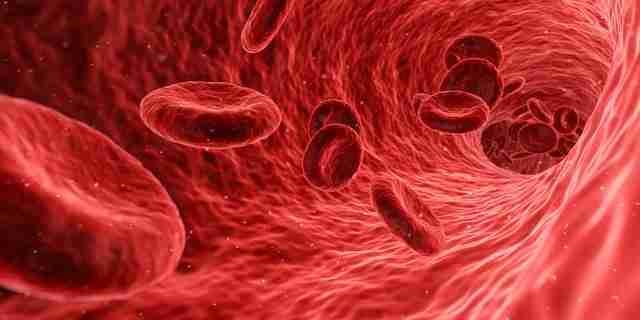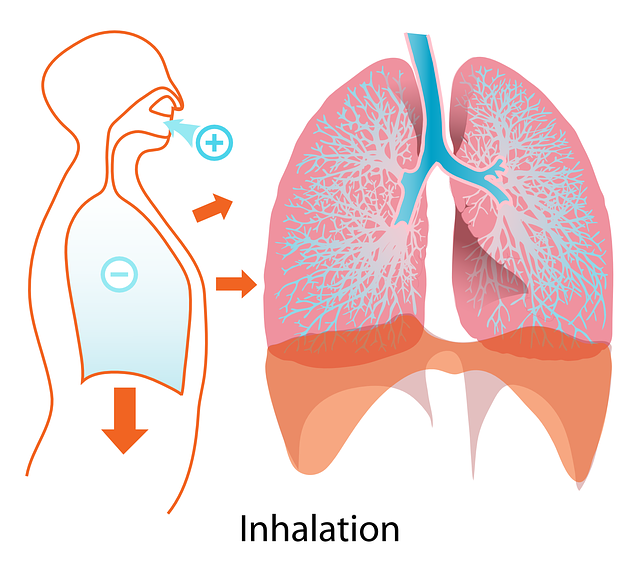You’ve mastered some great challenges in this module.
Great job! Now for a new kind of adventure, the next stop is a challenge. In the challenge you will demonstrate your mastery of breathing! Go forth and explore.
Experiment |
Grades:
Time:
Subject:
5-8
20-30 minutes
LIfe Science
databot™ braves the fantastic voyage into the human chest cavity to measure air pressure and better understand the respiration process.
Imagine you are an oxygen molecule and taking a journey through the human body. You are breathed in through the nose and you race down the trachea to the bronchial tubes, into the bronchioles, and ultimately absorbed by the alveoli as the respiratory system passes you off to the circulatory system.
Now in the bloodstream your job is to help red blood cells convert food to energy! Your body is comprised of multiple systems that all work together like this to keep you healthy and energized.
The center of the respiratory system where all this happens is your chest cavity which you can watch rise and fall as you breathe. What causes our chest to rise and fall? How do you think air gets into your lungs?
Let’s explore further with databot™ and find out!

Oxygen enriched red blood cells in the circulatory system convert food to energy!
By completing this experiment and conducting the scientific observations associated with it you will master the following knowledge! Good luck science explorer!
Air Pressure: The weight of the air above us pressing down. We don’t feel it normally because it is always there, but air has weight!
Alveoli: Tiny air sacs in your lungs that facilitate the exchange of oxygen into your bloodstream and carbon dioxide out of it.
Bronchial Tubes: Branch off your trachea and carry the air you inhale into your lungs.
Bronchiole: Smaller passages off your bronchial tubes that lead to the tiny air sacs known as alveoli where gas exchange takes place.
Carbon Dioxide (CO2): A colorless, odorless gas naturally present in the air you breathe and is absorbed by plants in photosynthesis. There would be no animal life or green plants without carbon dioxide. Green plants use energy from the sun plus carbon dioxide and water to produce carbohydrates and oxygen.
Diaphragm: A dome shaped muscle-membrane that separates your thorax from your abdomen. It plays a major role in breathing by contracting and changing the volume in your chest cavity which allows fresh air to rush in and deliver oxygen!
Exhale: To breathe out.
Homeostasis: Your body’s systems and processes that help maintain a balance of things like your oxygen and CO2 levels.
Inhale: To breathe in.
Lungs: Spongy organs located in your chest cavity that take in oxygen and expel carbon dioxide.
Oxygen (O2): A molecule formed of two oxygen atoms and is a major component (21%) of the air we breathe. When we breathe, we extract oxygen from the air and absorb it into our bloodstream. Our cells then use oxygen to convert food to energy!
Respiration: Facilitates the production of energy in the body through the process of breathing in oxygen and expelling carbon dioxide.
Respiratory System: Your lungs, airway, and associated muscles, are responsible for breathing – taking in oxygen and expelling carbon dioxide.
Trachea, or windpipe: A large tube that conveys air to and from your lungs. It is an important part of your respiratory system.
Setup
Refer to the picture to the right to see how to assemble your lung with databot™ inside!
Lab Procedure
Ready to begin! Let’s go!

Reflection:
Great job! Now for a new kind of adventure, the next stop is a challenge. In the challenge you will demonstrate your mastery of breathing! Go forth and explore.
Educator Info
Understand:
Disciplinary Core Idea
In multicellular organisms, the body is a system of multiple interacting subsystems. These subsystems are groups of cells that work together to form tissues and organs that are specialized for particular body functions.
Cross Cutting Concepts
Science and Engineering Practices
Several great resources supporting this lesson can be found at the University of Colorado Teach Engineering website which is a rich source of curriculum ideas.
Khan Academy Video: The carbon cycle
Khan Academy Video: Meet the lungs
Khan Academy Video: Oxygen movement from alveoli to capillaries
Khan Academy Video: Inhaling and Exhaling
Breathe Cover Photo by Fabian Møller on Unsplash
The awe inspiring circulatory system and blood cell image by Arek Socha on Pixabay.
Respiration image from Clker-Free-Vector-Images on Pixabay!
 Breathe by Robert O. Grover & Team databot™ is licensed under a Creative Commons Attribution 4.0 International License. Permissions beyond the scope of this license may be available at databot.us.com/contact.
Breathe by Robert O. Grover & Team databot™ is licensed under a Creative Commons Attribution 4.0 International License. Permissions beyond the scope of this license may be available at databot.us.com/contact.